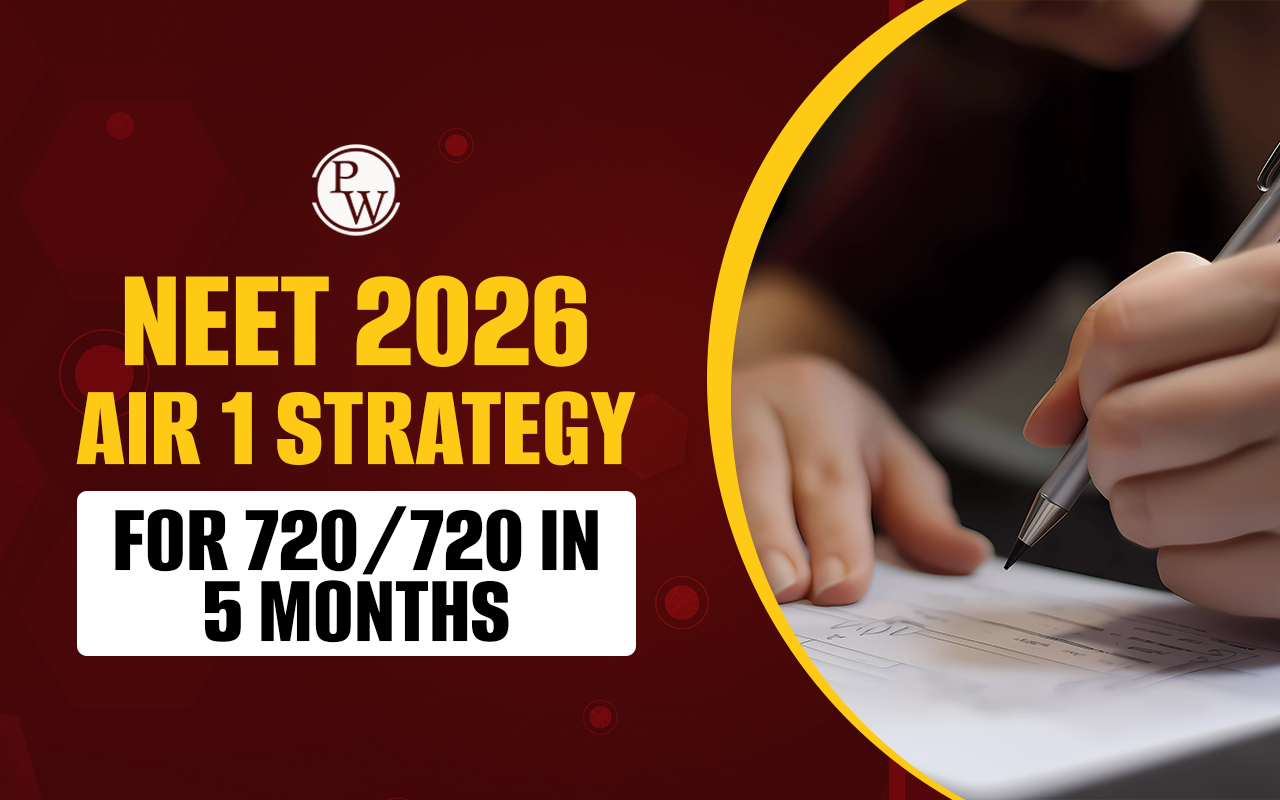
Moving Charges and Magnetism MCQs: When preparing for the NEET (National Eligibility cum Entrance Test), understanding Chapter 4 of Class 12 Physics, Moving Charges and Magnetism, is crucial. This chapter covers how moving electric charges interact with magnetic fields. To do well in the NEET, it is very helpful to practice with multiple-choice questions (MCQs) from this chapter. This article will discuss different aspects of MCQs related to Moving Charges and Magnetism, including their importance, and preparation tips.
Moving Charges and Magnetism MCQs
Students preparing for the NEET exam must focus on the Moving Charges and Magnetism chapter of Class 12 Physics. This chapter is significant when it comes to NEET Physics chapter-wise weightage . It is essential to understand how moving electric charges interact with magnetic fields, as this is a key part of Class 12 Physics. Practicing Moving Charges and Magnetism MCQs to excel in NEET is highly effective. MCQs help students grasp essential concepts and apply laws like Ampere's and Biot-Savart's Law. Regular practice with these questions enhances theoretical knowledge and problem-solving skills, leading to better exam preparation.Also Check:
Moving Charges and Magnetism NEET Questions
Students should focus on Moving Charges and Magnetism MCQs to prepare effectively for NEET. These MCQs help assess how well students can apply their knowledge to solve problems. Common questions may involve calculating magnetic fields, determining forces on moving charges, and analyzing how currents interact with magnetic fields. A key strategy is to practice with the previous year’s NEET questions. Solving these past exam questions provides insight into the types of questions asked and their format, helping students become more familiar with the exam. Another effective approach is to use the PW online NEET coaching platform that offers mock tests. These mock tests replicate real exam conditions, allowing students to get used to the format and time limits of the actual exam.
Moving Charges and Magnetism MCQs with Answers
Practicing MCQs with answers is vital for NEET preparation. It allows students to test their knowledge and understand the reasoning behind correct answers. Reviewing these answers helps students learn from mistakes and improves problem-solving skills, boosting confidence for handling various types of Moving Charges and Magnetism MCQs for Class 12 NEET. Improving problem-solving skills by practicing a wide range of questions is essential. The more problems students tackle, the better they will be at solving various questions and applying their knowledge effectively during the exam.| NEET Physics MCQs | |
|---|---|
| Units and Measurements MCQs | Motion in a plane MCQs |
| Mathematics Tools MCQs | Newton’s laws of motion MCQs |
| Motion in a straight line MCQs | Gravitation MCQs |
Q 1. Assertion (A): A compass needle is placed near a current-carrying wire. The deflection of the compass needle decreases when the magnitude of an electric current in the wire is increased.
Reason (R): The strength of a magnetic field at a point near the conductor increases by increasing the current. (1) Both Assertion (A) and Reason (R) are true and Reason (R) is the correct explanation of Assertion (A). (2) Both Assertion (A) and Reason (R) are true but Reason (R) is not the correct explanation of Assertion (A). (3) Assertion (A) is true but Reason (R) is false. (4) Assertion (A) is false but Reason (R) is true. Ans: 4Q 2. A current is flowing in an electricity line towards the north, the direction of the magnetic field at a point which is just below the line is;
(1) towards north (2) towards south (3) towards east (4) towards west Ans: 4Q 3. A current of 10 A is established in a long wire along a positive z-direction. The magnetic field B at the point (1 m, 0, 0) is;
(1) 1 μT along the +y direction (2) 2 μT along the +y direction (3) 1 μT along the –x direction (4) 2 μT along the +x direction Ans: 2Q 4. Two equal electric currents are flowing perpendicular to each other in two straight long wires as shown. Lines AB and CD are perpendicular to each other and symmetrically placed with respect to the currents. Where do we expect the resultant magnetic field to be zero?
(1) on AB (2) on CD (3) on both AB and CD (4) None of these Ans: 1Q 5. Following is a square-shaped loop, whose one-arm CD produces magnetic field B at the center of the coil. The resultant magnetic field due to all the arms will be;
(1) 4B (2) B/2 (3) B (4) 2B Ans: 1Q 6. Assertion (A): A current element is a source of magnetic field.
Reason (R): A moving charge is a source of the magnetic field.
(1) Both Assertion (A) and Reason (R) are true and Reason (R) is the correct explanation of Assertion (A). (2) Both Assertion (A) and Reason (R) are true but Reason (R) is not the correct explanation of Assertion (A). (3) Assertion (A) is true and Reason (R) is false. (4) Assertion (A) is false and Reason (R) is true. Ans: 1Q 7. An electric current passes through a long straight copper wire. At a distance 5 cm from the straight wire the magnetic field is B. The magnetic field at 20 cm from the straight wire would be;
(1) B/6 (2) B/4 (3) B/3 (4) B/2 Ans: 2Q 8. Two long parallel conductors carry currents in opposite directions as shown. One conductor carries a current of 10 A and the distance between the wires is d = 10 cm. Current I is adjusted so that the magnetic field at P which is at a distance of 5 cm to the right of 10 A current is zero. Value of I is;
(1) 10A (2) 30A (3) 40A (4) 20A Ans: 2Q 9. Two parallel conductors A and B separated by 5 cm carry an electric current of 6 A and 2 A in the same direction. The point between A and B where the field is zero;
(1) 0.25 cm from B (2) 1 cm from B (3) 1.25 cm from B (4) 3.75 cm from B Ans: 3Q 10. The value of I so that the magnetic field at R is zero.
(1) 1 A (2) 2 A (3) 3 A (4) 4 A Ans: 1Q 11. A length of wire carries a steady current and is bent first to form a plane circular coil of one turn, the same length now bent more sharply to give four turns of smaller radius. Magnetic field becomes;
(1) 3 times (2) ⅓ times (3) 16 times (4) Unchanged Ans: 3Q 12. The magnetic field at the center of a circular coil carrying current I is B. If the coil is bent into a smaller circular coil of n turns, then its magnetic field at the center is B′. The ratio of B′ and B is;
(1) 1: 1 (2) n: l (3) n2: l (4) 2n: l Ans: 3 Q 13. Two long straight conductors are held parallel to each other 7 cm apart. The conductors carry currents of 9A and 16A in opposite directions. The distance of a neutral point from the conductor carrying 16A current is; (1) 9 cm (2) 16 cm (3) 25 cm (4) 63/25 cm Ans: 2Q 14. Two coils X and Y having the same number of turns, carrying the same current, and in the same sense are arranged coaxially so that they subtend the same solid angle at point O. If the smaller coil is midway between the larger coil and the point O, then the ratio of the magnetic fields at O due to the two coils is
(1) 1 (2) 4 (3) 2 (4) 8 Ans: 3Q 15. A battery is connected between two points A and B on a uniform conducting ring of radius r and resistance R. One of the arcs AB of the ring subtends an angle θ at the center. The value of the magnetic field at the center due to the current in the ring is
(1) proportional to 2(2π – θ) (2) inversely proportional to R (3) zero, only if θ = 2π radian (4) zero, for all values of θ Ans: 4Q 16. Two infinitely long, thin, insulated, straight wires lie in the x-y plane along the x and y-axes. Each wire carries a current I, respectively in the positive x-direction and positive y-direction. The magnetic field will be zero at all points on the straight line;
(1) y = x (2) y = –x (3) y = x – 1 (4) y = –x + 1 Ans: 1Q 17. Two circular coils 1 and 2 are made from the same wire but the radius of the 1st coil is twice that of the 2nd coil. What is the ratio of the potential difference applied across them so that the magnetic field at their centers is the same? (2006)
(1) 5 (2) 4 (3) 7 (4) 2 Ans: 2Q 18. A current-carrying coil (I = 5A, R = 10 cm) having 50 number of turns finds a field at its center:
(1) 1.57 mT (2) 3.14 mT (3) 1 mT (4) 2 mT Ans: 1Q 19. Only the current inside the American loop contributes in;
(1) Findings magnetic field at any points on the ampere’s loop. (2) Line integral of the magnetic field. (3) In both of these. (4) In neither of them. Ans: 2Q 20. In a coaxial straight cable, the central solid conductor and the outer conductor carry equal currents in opposite directions. The magnetic field is zero. (Assume current is uniformly distributed);
(1) Inside the inner conductor. (2) Inside the outer conductor. (3) In between the two conductors. (4) Outside the cable. Ans: 4Q 21. A current flows along the length of an infinitely long straight and thin-walled pipe. Then;
(1) the magnetic field at all points inside the pipe is the same but not zero. (2) the magnetic field at any point inside the pipe is zero. (3) the magnetic field is zero only on the axis of the pipe. (4) the magnetic field is different at different points inside the pipe. Ans: 2Q 22. A solid cylindrical wire of radius ‘R’ carries a current I. The ratio of magnetic fields at points which are located at R/3 and 3R distance away from the axis of the wire;
(1) 1: 1 (2) 1: 2 (3) 2: 1 (4) 1: 4 Ans: 1Q 23. Ampere’s circuital law is conveniently used to determine the field of a solenoid or toroid as
(1) The field of a solenoid or toroid is uniform (2) The field of a solenoid or toroid is difficult to find by Blot-Savart law (3) The field of a solenoid or toroid is symmetrical to their shapes (4) The field of solenoid or toroid does not exist outside their cross-section Ans: 3Q 24. A ring of mean radius 15 cm has 3500 turns of wire wound on a ferromagnetic core of relative permeability 800. The magnetic field in the core for a magnetizing current of 1.2 A is
(1) 2.48 T (2) 3.48 T (3) 4.48 T (4) 5.48 T Ans: 3Q 25. The magnetic field inside a toroidal solenoid of radius R is B. If the current through it is doubled and its radius is also doubled keeping the number of turns per unit length the same, the magnetic field produced by it will be;
(1) 4B (2) 2B (3) B/2 (4) B/4 Ans: 2Q 26. Two toroids 1 and 2 have a total number of turns 200 and 100 respectively with average radii of 40 cm and 20 cm respectively. If they carry the same current I, the ratio of the magnetic fields along the two loops is;
(1) 1: 1 (2) 4: 1 (3) 2: 1 (4) 1: 2 Ans: 1Q 27. If the number of turns and current becomes double for any long solenoid, then the value of the magnetic field becomes;
(1) Twice (2) Same (3) Half (4) Four times Ans: 2Q 28. A long solenoid carrying a current produces a magnetic field B along its axis. If the current is doubled and the number of turns per meter is halved, the new value of the magnetic field is;
(1) B/2 (2) B (3) 2B (4) 4B Ans: 2Q 29. Currents flowing in a solenoid and a toroid are 2i and 6i respectively. If the number of turns per unit length is 2n and n respectively. Find the ratio of the magnetic field inside the core due to solenoid and toroid.
(1) 1 : 3 (2) 3: 4 (3) 2 : 3 (4) 3: 2 Ans: 3Q 30. The current flowing in a solenoid and a toroid is i and 4i respectively. If the number of turns per unit length is 3n and n respectively. Find the ratio of the magnetic field inside the core due to solenoid and toroid.
(1) 4: 5 (2) 3: 4 (3) 12: 1 (4) 1: 12 Ans: 2Q 31. Two toroids A and B have the total number of turns 3n and n respectively with average radii r and 3r respectively. If both toroids carry equal amounts of current, the ratio of the magnetic field inside the core of the toroids is
(1) 1: 1 (2) 3: 1 (3) 9: 1 (4) 1 : 3 Ans: 3Q 32. The core of a toroid having 3000 turns has inner and outer radii 11 cm and 12 cm respectively. The magnetic field in the core for a current of 0.7 A is 2.5 T. Calculate the relative permeability of the core.
(1) 684 (2) 290 (3) 395 (4) 768 Ans: 1Q 33. A toroidal solenoid has 3000 turns and a mean radius of 10 cm. It has a soft iron core with a relative permeability of 2000. What is the magnitude of the magnetic field in the core when a current of 1 A is passed through the toroid?
(1) 0.012 T (2) 0.12 T (3) 1.2 T (4) 12 T Ans: 4Q 34. Under the influence of a uniform magnetic field, a charged particle moves with constant speed V in a circle of radius R. The time period of rotation of the particle;
(1) Depends on R and not on V. (2) Is independent of both V and R. (3) Depends on both V and R. (4) Depends on V and not on R. Ans: 2Q 35. If the direction of the initial velocity of the charged particle is neither along nor perpendicular to that of the uniform magnetic field, then the path of the charged particle will be;
(1) A straight line (2) An ellipse (3) A circle (4) A helix Ans: 4Q 36. When α and b rays are subjected to a uniform magnetic field that is perpendicular to the direction of their motion, with the same speed. The curvature of the path of both particles are;
(1) equal (2) more for α particles (3) more for β particles (4) none of these Ans: 3Q 37. If a positively charged particle is moving as shown in the figure, then it will get deflected due to the magnetic field Towards;
(1) +x direction (2) +y direction (3) –x direction (4) +z direction Ans: 4 Q 38. Given below are two statements: One is labelled as Assertion (A) and the other is labelled as Reason (R).Assertion (A): In a uniform magnetic field, speed, and energy remain the same for a charged particle moving in a circular path.
Reason (R): A moving charged particle experiences magnetic force perpendicular to its direction of motion.
(1) Both Assertion (A) and Reason (R) are true and Reason (R) is the correct explanation of Assertion (A). (2) Both Assertion (A) and Reason (R) are true but Reason (R) is NOT the correct explanation of Reason (A). (3) Assertion (A) is true but Reason (R) is false. (4) Assertion (A) is false but Reason (R) is true. Ans: 1Q 39. A proton and an alpha particle of the same velocity enter a uniform magnetic field which is acting perpendicular to their direction of motion. The ratio of radii of the circular paths described by the alpha particle and proton are;
(1) 1: 4 (2) 4: 1 (3) 2: 1 (4) 1: 2 Ans: 3Q 40. A proton, a deuteron, and an α-particle enter a uniform magnetic field perpendicular to the field with the same velocity. What is the ratio of the radii of their circular paths?
(1) 1: 2: 2 (2) 2: 1: 1 (3) 1: 1: 2 (4) 1: 2: 1 Ans: 1Q 41. A charge q is moving in a uniform magnetic field. The magnetic force acting on it does not depend upon;
(1) Charge (2) Mass (3) Velocity (4) Magnetic field Ans: 2Q 42. Assertion (A): If a proton and α-particle enter a uniform magnetic field perpendicularly, with the same speed, then the time period of revolution of the α-particle is double that of the proton.
Reason (R): In a magnetic field, the time period of the revolution of a charged particle is directly proportional to mass and inversely proportional to charge.
(1) Assertion (A) is true, Reason (R) is true; and Reason (R) is a correct explanation for Assertion (A). (2) Assertion (A) is true, Reason (R) is true; Reason (R) is not a correction explanation of Assertion (A). (3) Assertion (A) is true, Reason (R) is false. (4) Assertion (A) is false, Reason (R) is true. Ans: 1Q 43. A neutron, a proton, an electron, and an α-particle enter a region of uniform magnetic field with equal velocities. The magnetic field is perpendicular and directed into the paper. The track of the particles is labeled as in the figure below. The electron follows the track;
(1) A (2) B (3) C (4) D Ans: 4Q 44. A moving charge will gain kinetic energy due to the application of;
(1) Electric field (2) Magnetic field (3) Both of these (4) None of these Ans: 1Q 45. A charged particle enters a uniform magnetic field B with its initial velocity making an angle of 45° with B. The path of the particle will be;
(1) Straight line (2) A circle (3) An ellipse (4) A helix Ans: 4Q 46. A proton of mass ‘m’ and charge ‘e’ is fired parallel to a uniform magnetic field of induction ‘B’. The radius of curvature of the path of the particle in the field is;
(1) Be/mv (2) mv/Be (3) Zero (4) Infinity Ans: 4Q 47. When a charged particle moves at right angles to a magnetic field then which of the following quantities changes;
(1) Energy (2) Momentum (3) Speed (4) All of these Ans: 2 Physics Wallah offers great online coaching for NEET, whether you’re in Class 12 or a repeater. For Class 11 students, PW provides affordable courses with experienced teachers, live and recorded classes, and helpful study materials in various languages. For repeaters, PW’s coaching includes personalized support and effective resources. Enroll now to get started on your path to success!Moving Charges and Magnetism MCQs FAQs
Q. How does practicing MCQs on Moving Charges and Magnetism help with NEET preparation?
Q. What should students focus on when solving MCQs from this chapter?
Q. How can online tests help in studying Moving Charges and Magnetism?
Q. Why is regular practice with MCQs important?
Q. How can reviewing MCQs with answers benefit students?










